Types of Blue Flowers – Blue in colors conveys the image of calmness and balance as it represents the bright sky and large ocean. Flowers in blue colors also have their own meaning.
Beyond white flowers which represent purity, or the purple ones which symbolize luxury, blue flowers are sometimes associated with hope and inspiration.
Thus, they are suitable for every occasion and can be used as the perfect choice to represent feeling and emotion without any border.
Whether you are planning to add a touch of blue in your beautiful garden or intending to create a bouquet of flowers dominated by blue colors, here is the list of blue flowers that will catch your attention because of their unique beauty.
1. Scabiosa
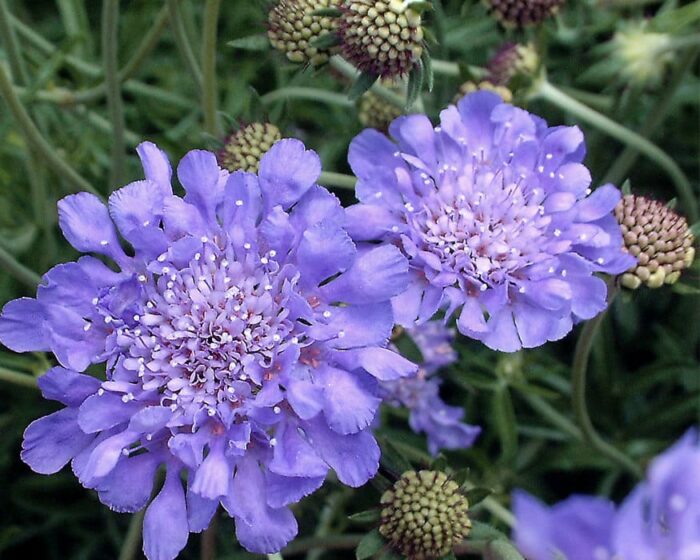
Scabiosa belongs to the family of honeysuckle flowering plants. The flowers of this plant have different shades of colors, from pink, violet, to light blue.
Scabiosa Butterfly-Blue or Pincushion flower is the most well-known genus from Scabiosa which has blue flowers.
As the name suggests, pincushion-shaped flowers of Scabiosa Butterfly-Blue can attract butterflies once the petals are blooming.
If you want to include this pretty flower in your garden, consider putting it at the edge of the garden to frame your flowery land.
2. Stiff Blue-Eyed Grass
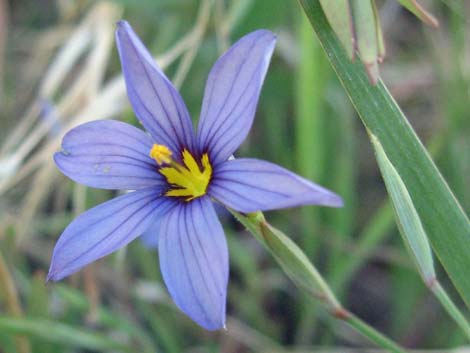
Because it mostly lives as wildflowers in the prairie, the stiff blue-eyed grass is also known as blue-eyed prairie grass. The flower has six sapphire-blue petals with pointed tips as well as a yellow anther in the middle.
Meanwhile, the leaves are narrowed and look like sword-shaped grass. Growing in the moist meadows, stiff blue-eyed usually bloom in spring and summer.
3. Desert Bluebell
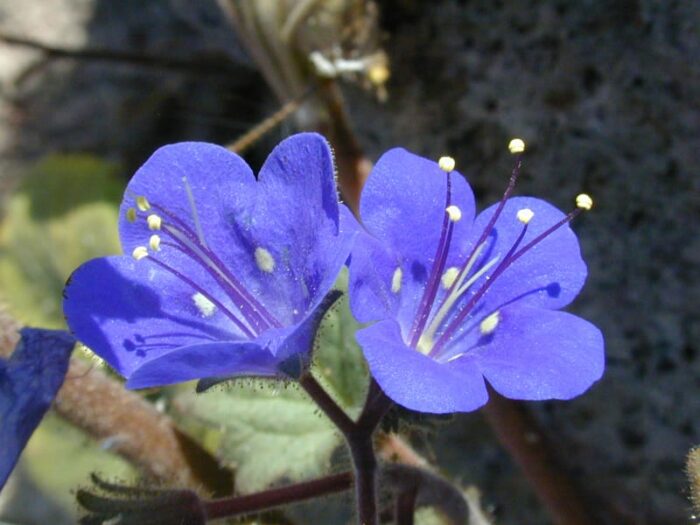
As the name suggests, bluebell, in general, refers to a type of flowering plant which has bell-shaped blue flowers.
It is originated from the southwestern area of the United States and commonly grows in woods.
Desert bluebell, however, prefers to live in sandy soil that is exposed to the sun. The flower blooms in spring, between March and May.
4. Passion Flower

Passionflower is a type of tropical climbing plant that produces flowers in many colors. One of the flower species, namely the blue-crown passionflower, blooms in the combination of blue and white.
The petals are white, while the tiny filaments on top of them are blue. The origin place of this unique-shaped flower is in South America, including Argentina, Brazil, and Chile.
5. Sweet Pea Flower
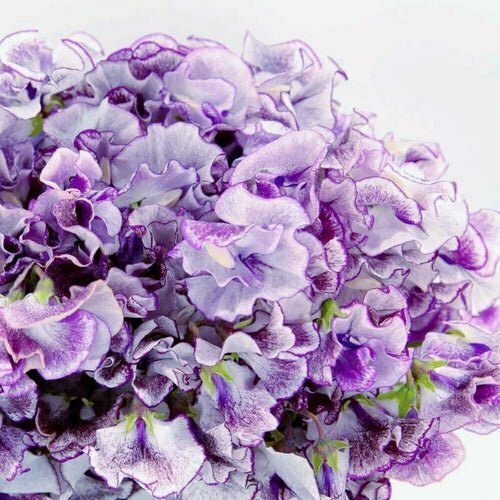
Blue Sweet Pea Flower, or Indian Pea, grows in some areas in Asia and East Africa. Blue flowers in sweet pea plants come with a paler shade.
They are noticed to have a sweet smell and two half-rounded petals. Sweet Pea can be used to feed livestock on the farm as well as processed for human consumption.
Flour made of sweet pea seeds is one of the main ingredients for gachas, a type of Spanish dish that is usually eaten with biscuits or crackers.
6. Lobelia

Lobelia grows largely in tropical regions which have a warm temperature. It is known to have purple or dark blue flowers.
The flower petals are small and thin, making them perfect to be planted in the garden or inside a window pot.
Apart from its tiny appearance, lobelia has numerous benefits, especially to cure several breathing problems such as a cough, apnea (in newborn babies), asthma, and bronchitis.
7. Blue Flax Flower

Blue flax flower is a native Californian wildflower that has five thin petals in purple, light blue, or dark blue colors.
The flower usually grows from March through September with a maximum height of two feet. Dry and sandy soils are the perfect place for this flower to grow.
People often use it to feed livestock because of its abundant content of protein.
8. Columbine
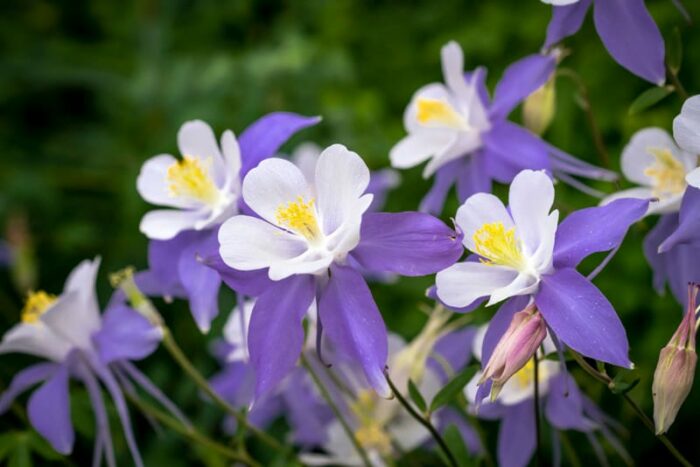
Columbine has light blue flowers with five-pointed petals which are facing down from the stem.
Although it can be found in wild areas such as woodlands or meadows, Columbine is considered the regular garden plant which is easy to grow and maintain.
You only need to prepare a well-draining area when you want to plant this flower in the garden. Columbine does not like the sunlight that much, so it is quite hard to find flowers during the summer.
9. Love in Mist

Also known as a ‘ragged lady’ flower or ‘devil in the bush,’ love in mist has a delicate characteristic.
It belongs to the genus of Nigella and can be found in Europe, South Asia, and North Africa in the spring or at the beginning of the summer.
The flower comes in different colors, from white, red, to blue. Nigella with blue flowers, Nigella hispanica, is commonly planted as ornamental plants in the garden because of its decorative feature.
10. Blue Poppy
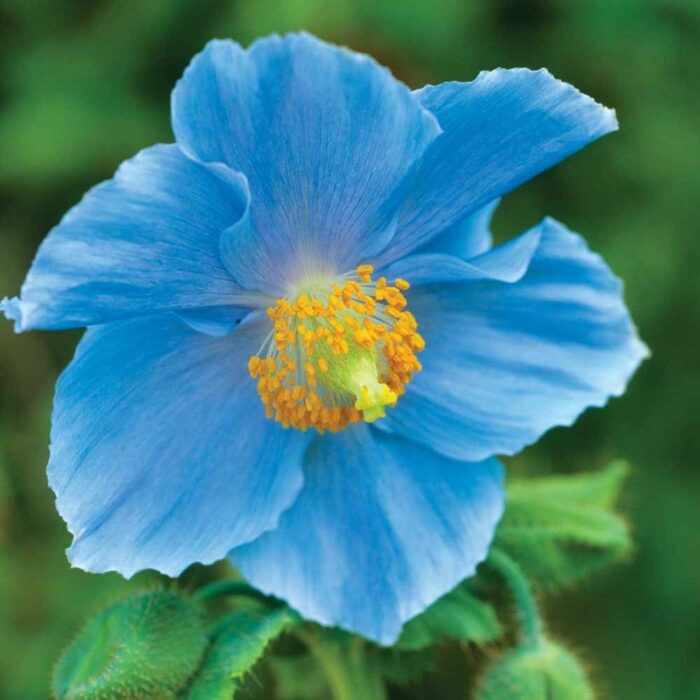
Although the typical color of a poppy is red, there are one species that has blue flowers, namely Himalayan Blue Poppy.
When it is in full bloom state, blue poppy grows large light blue flowers consisting of four petals. This type of plant is perennial, meaning that it lasts for a long time and can be found easily all year round.
11. Morning Glory
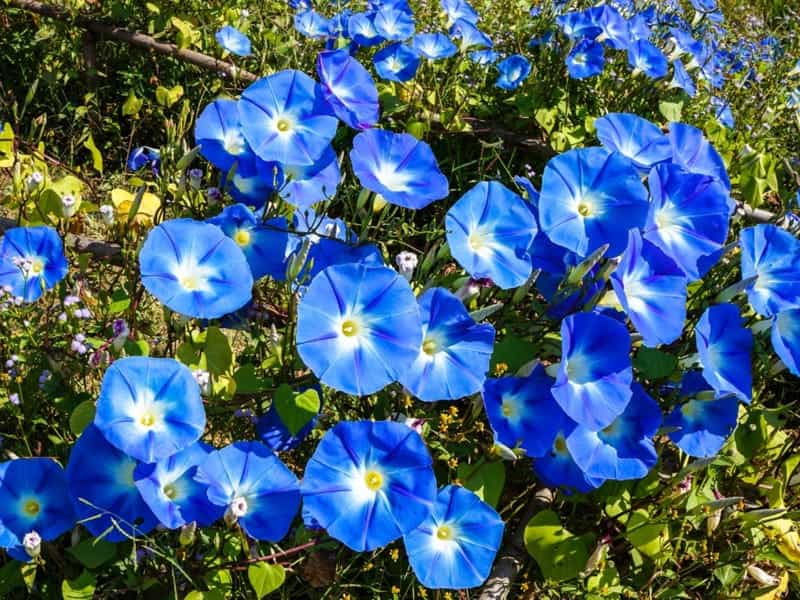
Following its name, this flower gloriously blooms in the morning when the sunlight shines and then dies as the sun goes down.
When blooming, morning glory has a trumpet-like flower that is sometimes covered by morning dewdrops. Meanwhile, the flower will turn into a spiral bud when it is not blooming.
12. Blue Geranium
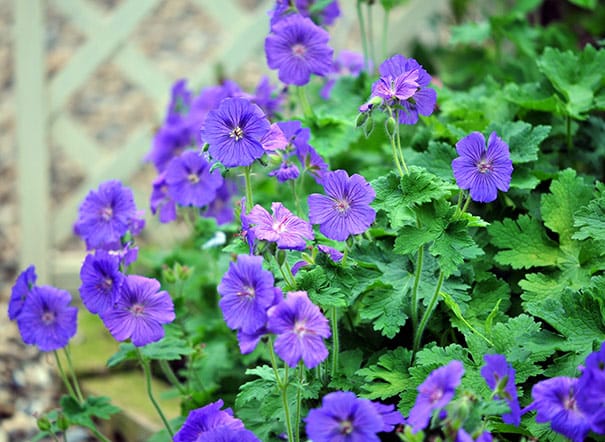
Blue geranium, commonly known as Johnson’s Blue, is a type of flower that originated from Europe and South Africa. It is characterized by small rounded petals that come in blue and purple.
Just like other types of geranium flowering plants, blue geranium is often grown in the garden inside containers. Blue geranium can grow through several seasons, from spring, summer, until fall.
13. Forget-Me-Not
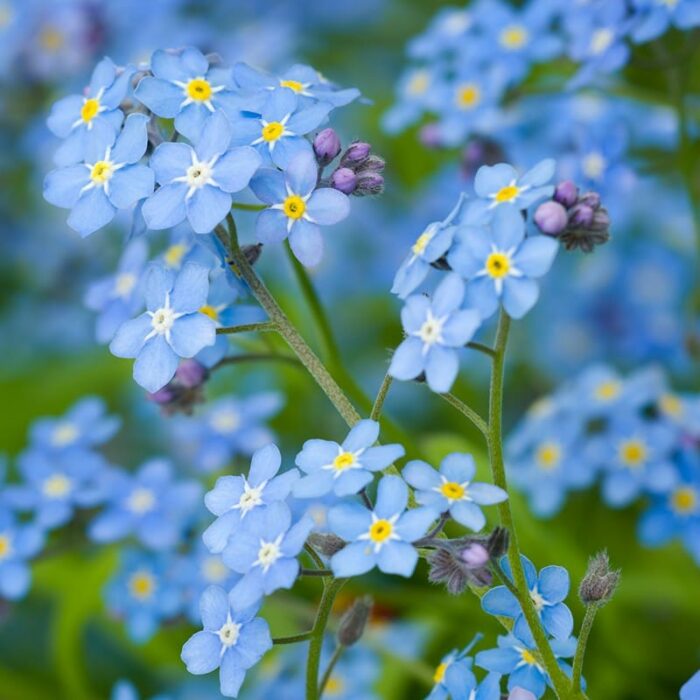
One unique thing about forget-me-not is that the flower only grows one time in a year. The plant itself is considered one of the most popular blue flower names, which are usually planted in a garden.
Forget-me-not has flower petals in the shape of a mouse’s ears. Because the flower’s name conveys the meaning of remembrance, forget-me-not is used as the symbol of the Alzheimer’s Society.
14. Blue Hydrangea

Hydrangea is a type of flowering bush in which the blue flowers are rounded as a group in one stem.
It grows perfectly in spring or fall, while the colors can turn from blue to blush pink, depending on the pH of the planting area.
Although this flower was considered to be an illness carrier in the past, blue hydrangea in modern days is often used in wedding bouquet arrangements.
15. Blue Orchid
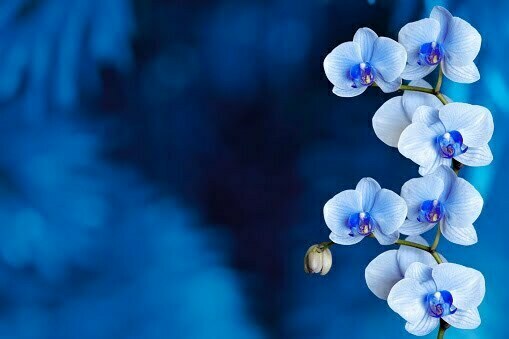
The unusual yet unique shape of the orchid, combined with blue colors, creates an incomparable beauty.
Blue orchid is a very rare flower species, and because of that, it is quite expensive.
Chinese often uses the blue plant orchid as one of the ingredients in their homemade medicine to treat some respiratory problems such as flu, cold, and lung infections.
16. Globe Thistle
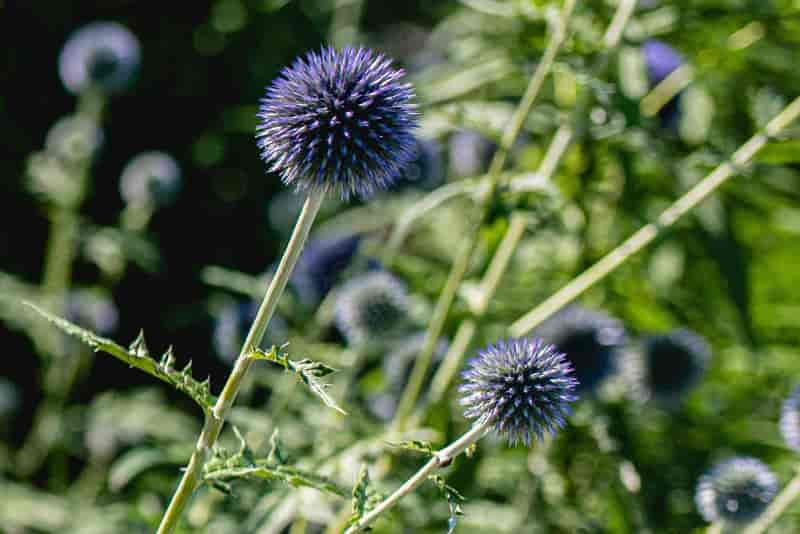
Globe thistle belongs to the sunflower and aster family; thus, it is characterized by the presence of flower seeds.
This flower does not have a large petal, but instead, a rounded and spiky flower head on the top of the foliage covered in prickles.
Globe thistle is a perennial plant and will continue to dry beautifully when it is plucked, making it the perfect choice for dried flower display.
17. Blue Delphinium
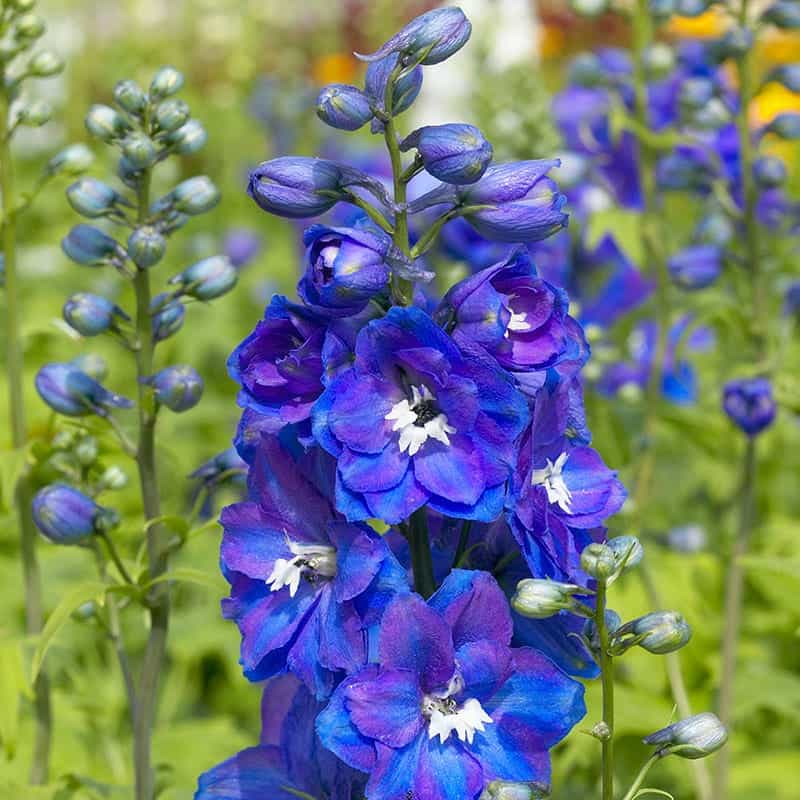
Delphinium is a type of tall garden plant with blue flowers in light and dark shades.
The word “delphinium” means dolphin in Greek because a single bloom of the flower will look like a leaping dolphin when it is plucked from the stem.
It is originated from the Northern Hemisphere and grows larger in tropical areas as well as mountainous habitats.
18. Iris Flower
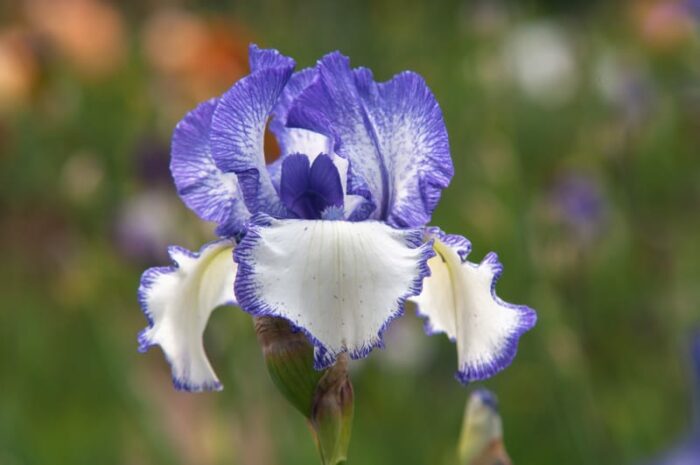
Iris flower grows particularly in wet areas and usually has colorful flowers, including shades of blue.
In addition to dark purple or blue flowers, the iris has long and narrow leaves in the shape of a sickle.
The flower is originated from a wide variety of regions but derives its name from the Greek word for rainbow, in line with its colorful flowery features.
19. Cornflower/Bachelor Button Flower
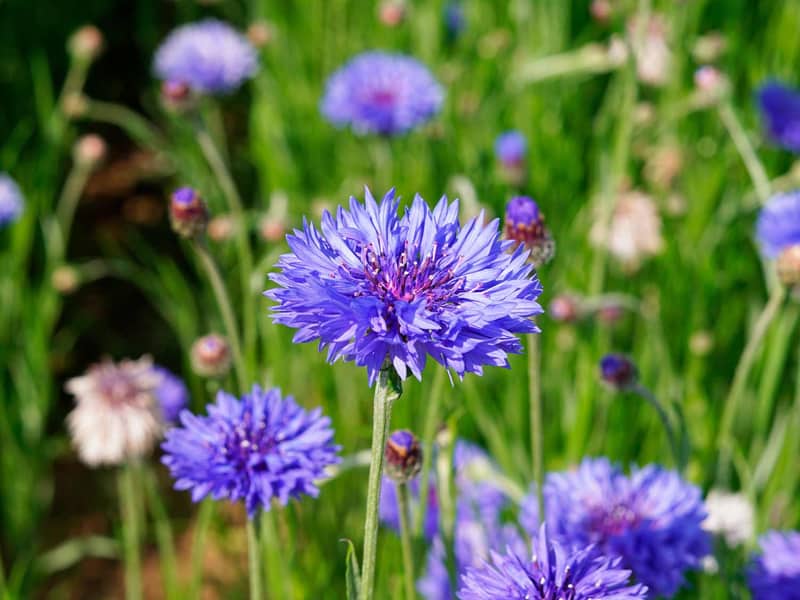
Whether it is planted in fields or gardens, cornflower is always able to represent its outstanding beauty. Blue cornflower goes by the name bachelor button flower.
It can be planted in any soil and usually grow from the early spring to late fall.
At the blooming state, the bachelor button grows long, tiny flowers which are gathered around the tip of the stem to form a bush-like flower head.
20. Blue Daisy
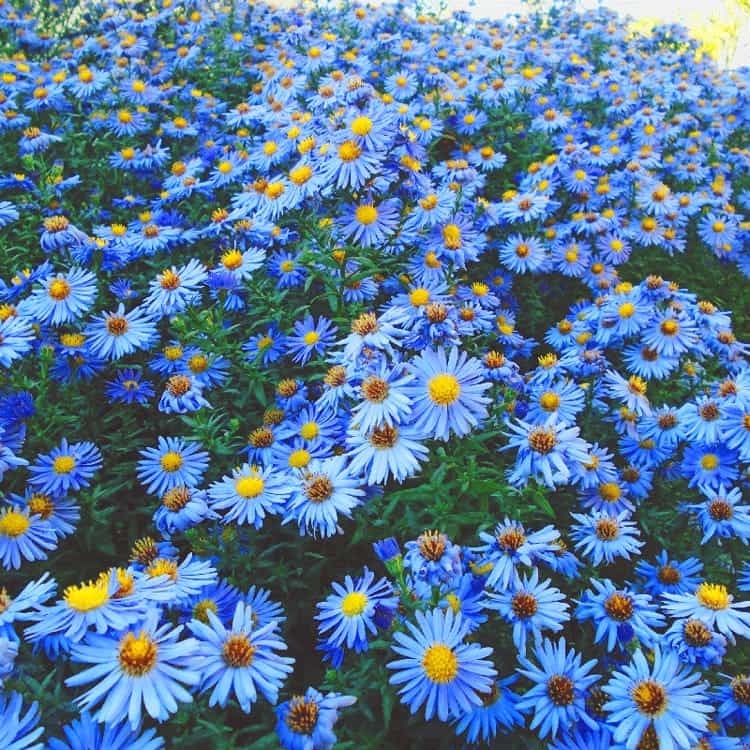
Growing in grass or flowerbeds, blue daisy is famous for its simplicity, even though it still gives a natural beauty through its long and tiny flower petals.
The flower prefers dryness to humidity. However, it may stop blooming when the summer temperature begins to rise.
For that reason, you need to carefully schedule the growing cycle when planning to plant blue daisies in your garden.
21. Hyacinth
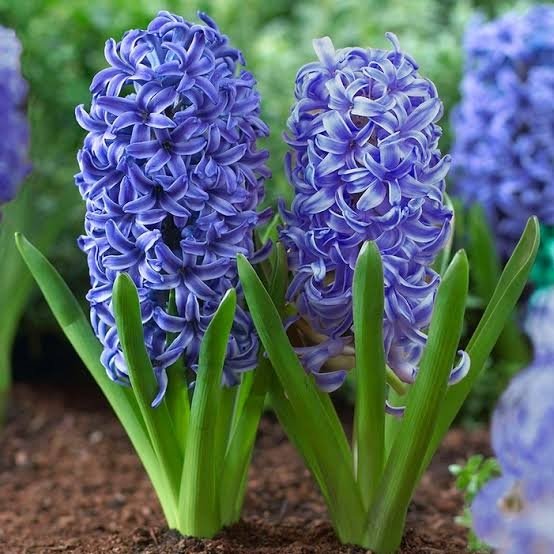
Hyacinth and lavender somehow have several things in common. Both plants smell pleasant and have a lot of small flowers that grow together to form one thick stem.
The difference between them is that lavender has pale purple flowers, while hyacinth comes with blue flowers in bright shades.
22. Primrose
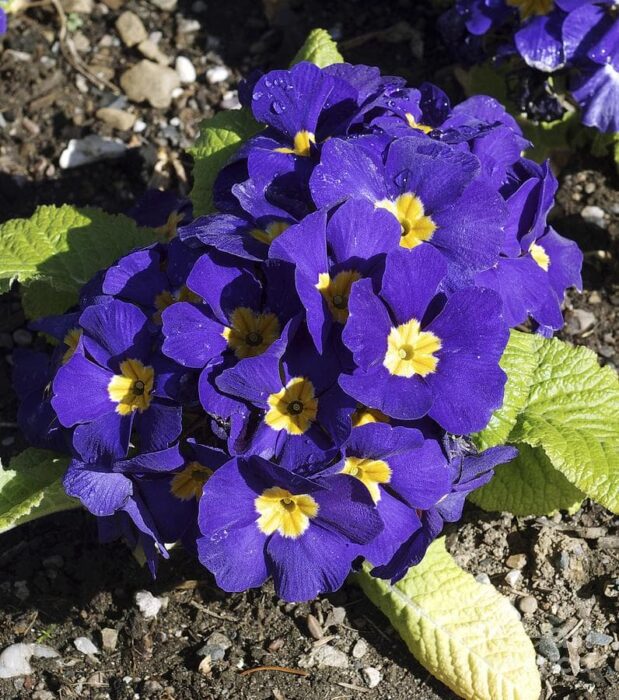
Primrose is one of the wild plant types that commonly have pale yellow flowers. Primrose with blue flowers is considered very rare.
It still has a touch of yellow shades as well, particularly in the middle part, and in some species, at the rounded edge of each petal.
Nevertheless, the combination of dark blue and pale yellow in one flower brings an exquisite appearance.
23. Blue Aster
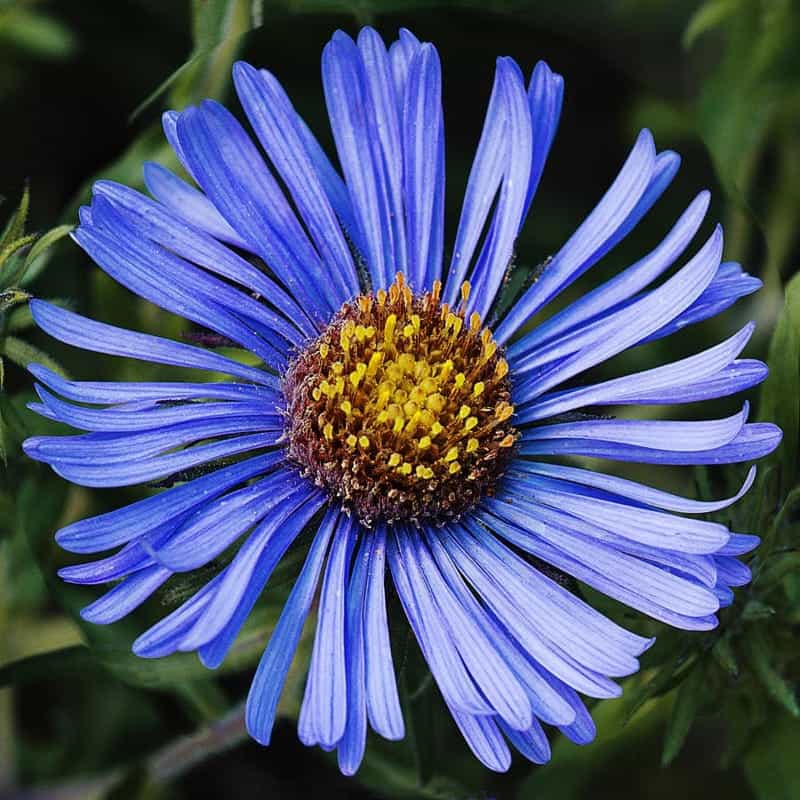
Blue aster is a type of flowering plant that belongs to the family of Asteraceae. The word ‘aster’ is derived from Greek, after the name of Astraea, the goddess of justice.
It is said in Greek mythology that blue aster came from Astraea’s tears when she felt sorry for the destruction of the earth by the god Jupiter.
Because of its backstory, aster is believed to have magical powers. In addition, to bring an elegant image, the flower represents peace and patience at the same time.
24. Artichoke Flower
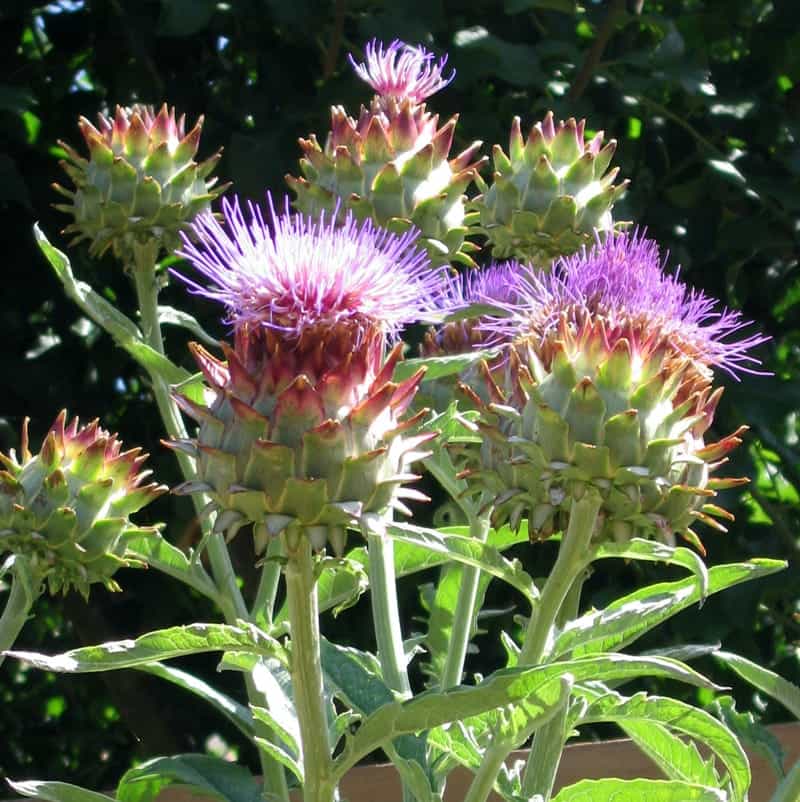
Artichoke is originated from several parts of the Mediterranean region. It has been popularly known as a vegetable when in fact, it is also a flower.
Artichoke as a vegetable is taken before the flower blooms. In a blooming state, an artichoke flower forms a flower head consisting of numerous soft and thin hairs in various colors, including blue.
Artichoke flowers can grow for a long in different types of soil without any special treatment.
25. Agapanthus

Although it is popular by the title “lily of the Nile,” agapanthus does not belong to the lily family at all.
It is originated from the southern parts of Africa under the plant family Amaryllidaceae. Agapanthus commonly grows in summer with curved leaves and flowers in the shape of a tube or funnel.
26. Anemone
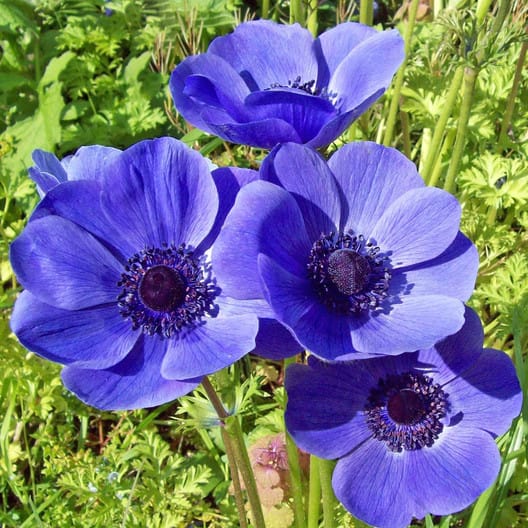
Anemone is a type of small flowering plant that can grow both in gardens and wilderness. Anemone apennina, the type of anemone with blue flowers is originated from central Europe.
Growing largely in spring, the blue anemone is characterized by small flower petals and thin serrated leaves.
27. Gentian
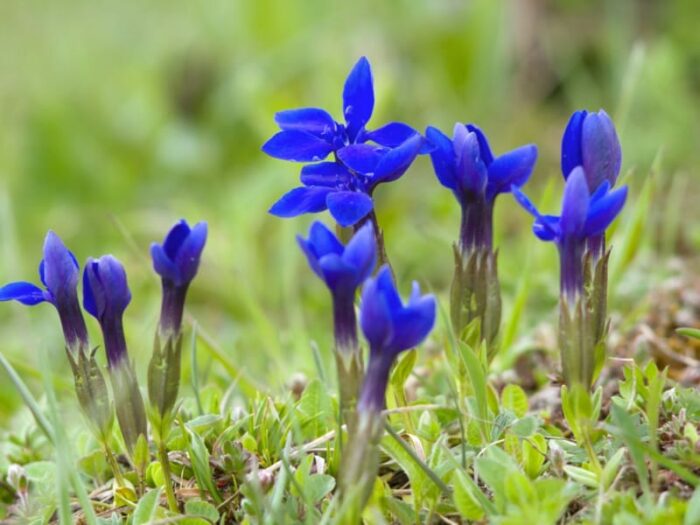
Gentian is one of the popular flowering plants with blue flowers. Rock garden becomes the main habitat for this flower as it grows better in soils that are rich in humus.
Gentian usually has five narrowed petals wrinkled branches or stem. The flower is often used as the ingredient for traditional medicine to treat several glycemic index problems such as vomiting, diarrhea, and stomachache.
It is also consumed as tea to improve appetite.
Read also:
- Top 15 Most Beautiful Green Flowers with Pictures
- 15+ Most Beautiful Rare Flowers in The World
- 25+ Most Beautiful Purple Flowers with Pictures
28. Grape Hyacinth

Grape hyacinth commonly grows in a meadow during spring and summer. It has rounded blue flowers that are shaped like grapes, while its long leaves narrow from the bulb.
Popularly known by the name starch lily because of its aroma, grape hyacinth likes to bloom in sandy soil within the area with a lot of sunlight.
Those types of blue flowers have different characteristics and grow in different areas. Nevertheless, they have one thing in common, that is, adding a variety of flowering blooms in the calm and balanced blue colors.
 Jessica Paster The Future is Green
Jessica Paster The Future is Green